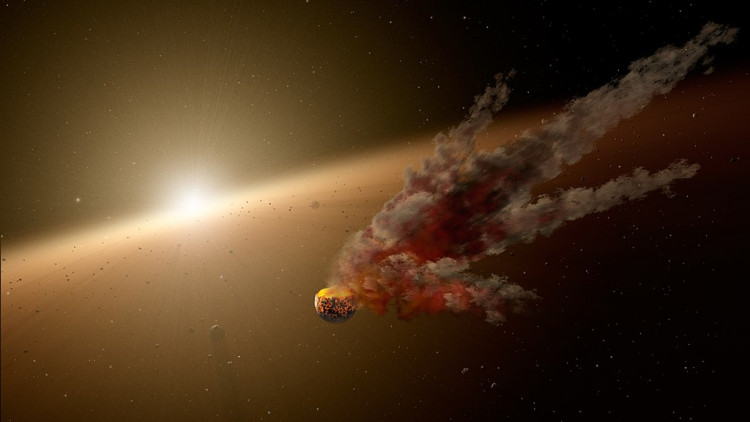NASA is all eyes on a massive asteroid that could potentially smash into Earth. The space agency is actively tracking asteroid JF1, a designated near-Earth object (NEO), which means it orbits the sun and comes in dangerously close proximity to our planet.
"Some asteroids and comets follow orbital paths that take them much closer to the Sun and therefore Earth - than usual," NASA explained. "If a comet's or asteroid's approach brings it to within 1.3 astronomical units of the Sun, we call it a Near-Earth object."
Discovered in 2009, scientists conclude that the likelihood of a direct impact with JF1 on May 6, 2022, is very low - a mere 0.026%. This is 99% of the probability that it will pass by Earth without inconveniencing us in the least. Yet, JF1 is far from the only potential impact of an asteroid that scientists are monitoring.
There is another potentially hazardous asteroid 99942 Apophis-340-m wide-which will make a comparatively similar trajectory within 31,000 kilometers of Earth on Friday, April 13, 2029. Apophis isn't going to hit Earth during the flyby, but if there's something we can tell with probability, it's that the internet loves a massive, killer asteroid making a flyby-and with a killer name too-Apophis.
It might not be in the next 100 years, but someday, as it has been many times in the past, an asteroid will ram into Earth again. The next documented "very likely" collision is a mammoth asteroid moving at an "impossible" pace in the direction of Earth-but, not until March 16, 2880, 860 years away. If we humans haven't blown up by then, our survival will come down to just how good we're doing on one account: planetary defense. What will it take to protect ourselves from a possible impact?
To that end, NASA and ESA are preparing to try an asteroid deflection technique for a real asteroid in 2022. Informally-known as Didymoon, an asteroid would be thrown off course if the test is successful.
Scientists in Europe and the US have joined together to form the Asteroid Impact Deflection Assessment (AIDA), an attempt to discover ways to redirect space rocks and potentially prevent disastrous events. AIDA is part of a project named the Double Asteroid Redirection Test (DART), which intends to send the "small" Didymoon off course in October 2022. Essentially, physicists are attempting to aim a 'dart' at the asteroid, nudging it off track.
Only time will tell if these measures are going to be successful.



